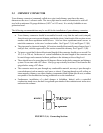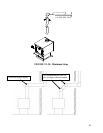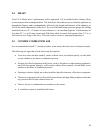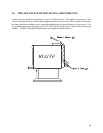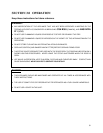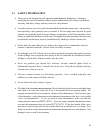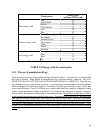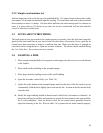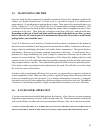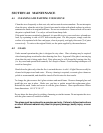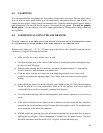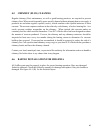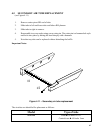35
3.2.2 Simple wood moisture test
Add one large piece of wood to the top of an established fire. If it starts to burn on three sides within
one minute, it is dry and seasoned and right for burning. If it turns black and starts to burn in about
three minutes or more, it is damp. If it turns black and does not start burning until five minutes or
more, it is green and wet. If it hisses at any time, the wood is soaked and will not burn until the
excess of moisture is boiled away.
3.3 NOTES ABOUT FIRST FIRING
The fresh paint on your stove needs to be cured to preserve its quality. Once the fuel load is properly
ignited, only burn small fires in your stove for the first four hours of operation. Never open the air
control more than necessary to achieve a medium burn rate. Make sure that there is enough air
circulation while curing the stove. Open one or more windows. The odours can be smelled during
the 3 or 4 first fires. Never start your stove outside.
3.4 LIGHTING A FIRE
1. Place enough crumpled balls of newspaper or other paper into the stove to cover the bottom
of the firebox.
2. Place small and dry kindling on the crumpled paper.
3. Place larger and dry kindling on top of the small kindling.
4. Open the air intake control fully. (see Table 3.4)
5. Light a fire at the bottom of the crumpled paper and close the door. If the fire tends to go out
momentarily, hold the door slightly ajar to activate the fire. As soon as the fire catches hold,
close the door.
6. Ideally the large kindling should be burned until a thick bed of red embers is obtained. At
that point, add cord wood fuel and continue to operate the draft control wide open until the
fire is well established. Once the firebox is hot, the air control can be partially closed to
adjust the intensity of the fire. Refer to table 3.4 to operate the air intake control properly.



